The The Syntax Analysis of Averb of Manner Found in the Novel “the Wonderful Wizard of OZ”
on

e-Journal of Linguistics
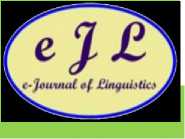
Available online at https://ojs.unud.ac.id/index.php/eol/index
Vol. 17, No. 2, July 2023, pages: 192--202
Print ISSN: 2541-5514 Online ISSN: 2442-7586
https://doi.org/10.24843/e-jl.2023.v17.i02.p08
The Syntax Analysis of Averb of Manner Found in the Novel “the Wonderful Wizard of OZ”
I Gede Nika Wirawan
Program Studi Sistem Informasi, ITB Stikom-Bali, Denpasar Email: Nika_wirawan@stikom-bali.ac.id
Article info
Received Date: 27 Desemebr 2022
Accepted Date: 3 January 2023
Published Date: 31 July 2023
Keywords: Adverb of Manner, Syntax Analysis, Sentence Structure
Abstract
This research paper entitled “The Syntax Analysis of Adverb of Manner Found in the Novel “The Wonderful Wizad of Oz”. This research study aimed to analyze the form of adverb of manner and its positions of adverb of manner found in the data source. This research study used the theory proposed by Brown and Miller (1991) in analyzing the tree diagram of adverb of manner and it was supported by other theories in analyzing the form and the position in adverb of manner found in the structure. Library research was the method used in collecting the data as the researcher read the data source before getting data in adverb of manner. The method that was used in analyzing data was qualitative method. The data were taken from the novel entitled “The Wonderful Wizad of Oz” that was written by W.W Denslow. The researcher of this study found that there was one form of adverb of manner found in the novel entitled “The Wonderful Wizad of Oz”. Adverb of manner found in the data source was an adjective followed by ly- suffix. There
was one adverb of manner placed in the initial position and eight adverbs of manner placed in final position. They were adverb of manner that could be filled in the sentence structure in the form of adverb of manner.
The Wonderful Wizard of Oz is known as an American children's novel that was written by famous author L. Frank Baum and it was illustrated by W. W. Denslow. The novel told about the story of chronicles the adventures of a young Kansas farm girl named Dorothy in the magical Land of Oz after she and her pet dog Toto were swept away from their home by a tornado. Upon her arrival in Oz, she realized that she could not return home until she had destroyed the Wicked Witch of the West.
A sentence is stated as a grammatical unit in which there are one or more words. People usually express an idea, a question, subject and statements by using words and contain a subject and a verb. Many sentences can be built by sentences which unite as one. Phrases and sentences are built up of constituent series (syntactic units) and they serve grammatical function. The arrangement and the form of word were related in a sentence. Many words made some sentences in English as one unit. In a sentence, we can see subject, verb, complement, object and adverbial (SVCOA).
An adverb is stated as a word used to modify several types of words including an adjective, a verb, a clause, another adverb, or any other type of word or phrase, with the exception of determiners and adjectives, modifying nouns. We can understand adverbs by thinking about them as the words providing context. Adverbs give a description of how, where, when, in what manner and to what extent something is done. The examples of adverb of manner are hurriedly, quickly, slowly, and instantly. It functions to modify a verb or verb phrase. An adverb can give more information about the manner, time, place, and frequency. Meanwhile, adverbials are stated as words groups which an adverbial phrase tells us something about the verb. One of classifications of adverbials is called as adverb of manner.
The theory used to analyze the form and position of adverb of manner in this research study was proposed by Brown and Miller (1992). The theory stated that adverbial of manner indicates manner in which the event is described by the verb. An adverb of manner provided information about how the event could be described by the verb. Adverbial of manner explained on how an action can be performed and explained. An adverb of manner can be formed by an adjective and then followed by -ly suffix. An adverb of manner is formed by adding suffix ‘ly’ to an adjective. An adverb of manner can be formed by an adjective followed by suffix –ly and prepositional phrase. An adverb of manner can be analyzed by using tree diagram in order to analyze the position of adverb of manner in constituent structure. The sentence structure can be known as syntactical identification by analyzing the constituent structure. Adverb of manner can fill in some variations of its position in the clause. Adverb of manner can be positioned in the initial, medial, and final position.
There are three previous study to be discussed in this research study. The first is the research study from Susnawati (2006). In her undergraduate thesis entitled “The Analysis of Manner Adjunct in “The Witness” by Sandra Brown” describing about the phrase form of manner adjuncts and manner adjunct in the Form of Clause found in the Charlotte’s Web Novel. The forms of manner adjunct found in the Charlotte’s Web Novel were analyzed by using their constituents structured. There were two problems of the study that was discussed in this research paper. The first was to analyze about form of manner adjunct that occurs in the novel entitled “The Witness” by Sandra Brown and how their constituents structured.
The second was to analyze about the position of manner adjunct that was found in the novel “The Witness”. This study analyzed the phrase form of manner adjuncts. Those are manner adjunct in the form of adverb phrase. The manner adjunct in the form of adverb phrase occured in the initial, medial and final position. Manner adjunct in the form of prepositional phrase was analyzed in this study. They were in the initial position and end position while it occured in the medial position. The theory of Quirk et al (1985), Swan (1996), and Leech (1975), Deterding and Gloria (2001) and Hornby (2005) were used in this study.
The second research study was from Rathadi (2009) in his undergraduate thesis entitled “The Analysis of Adverb of Degree in Charlotte’s Web Novel” describing the position of adverb degree in sentence structure. Actually, there were two problems to be discussed in his research study. The first was to analyze the position of adverb of degree found in sentence structure. The second was to analyze the form and function of adverb of degree found in sentence structure. Relating two sentences to become a unit of sentence were used by some adverbs. The theory of Eckersley (1965) describing about adverb of degree to what extent was used in this study. The theory of Huddleston (1984), Thomas and Martinet (1986) were used in the writing.
The third undergraduate thesis entitled “Adverbs and its Syntactic Function with Special reference to Danielle Steel’s Daddy” written by Nuryanti (2007). This study analyzed about the types of adverb found in the novel. This study found that there were three position of adverb which found in the novel. This study used the theory of Huddleston (1984) in his book entitled
Introduction to the Grammar of English. Secondly, this study used the theory of Quirk (1972) entitled a University Grammar of English. This study applied the theory of Swan (1996) entitled Practical English Usage. The weakness of this undergraduate thesis was that this study described about adverb in general and the relation between the problem and the theory used by the writer is inappropriate. The strength of this was on the application on the syntactic function to the data. The writer chose this undergraduate thesis as one of the review because it related to the topic of adverb of manner.
The novel entitled “Wonderful Wizard of Oz” was used as the data source as there were many data of adverb of manners which were found in the data source. The data were collected through reading the entire data in the novel entitled “Wonderful Wizard of Oz” in order to get the data of adverb of manner. The parts of research method included data source, method and technique of collecting data and method and technique of analyzing data. The data sources and method and technique of collecting data were the procedures that were used to get certain objects. It also explained the data taken from the sources and how to analyze it. The research was done in the field of observation. The research was done by taking data source containing adverb of manner that were found in the data source.
In analyzing data of adverb of manner, this research study applied qualitative method. First, the collected data were then analyzed descriptively. Adverb of manner was classified and analyzed, based on the forms and positions. The form and position of adverb of manner were analyzed by using the theory proposed by Brown and Miller (1991). The forms of adverb of manner were analyzed by using the tree diagram. The position of adverb of manner were then explained based on the theory proposed by Quirk and Greenbaum (1973).
Brown and Miller (1992:95) stated that adverbs of manner are the items that most readily spring to mind as examples of the class adverb, especially those formed by the –ly suffix to a corresponding adjective form:
-
1. Happy ----------------» happily (Brown and Miller, 1991:95)
-
2. Vicious -----------------k viciously (Brown and Miller, 1991:95)
In the prepositional phrase, the form of adverb of manner is characterized by the preposition as the head of adverb of manner. Adverb of manner is positioned in the initial position, medial position and final position.
Brown and Miller (1992:94) stated that, adverbs of manner are typically a prepositional phrase as follows:
-
1. The man beat the dog in a vicious manner (Brown and Miller, 1991:94)
-
2. The man beat the dog with apparent enjoyment (Brown and Miller, 1991:94)
-
3. John stood on his head with difficulty (Brown and Miller, 1991:94)
The forms and position of adverb of manner were analyzed by using the tree diagram. The form of adverb of manner is an adejctive followed by –ly suffix and it was analyzed by using tree diagram. It can be seen below, here are the data of adverb of manner and the analysis of them in tree diagram.
Datum 1
Dorothy held Toto tightly (106)
S

S

NP
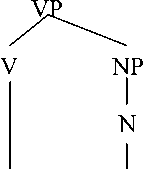
held Toto
ADVP
ADV
Dorothy
tightly
-
a. Form
It can be seen from an adverb of manner in data 1 that tightly fills the position of adverb of manner in the final position. An adverb of manner tightly comes after a verb held that was used to emphasis on how Dorothy held. Tightly is an adverb of manner that is formed by an adjective tight and added by -ly suffix. In the process of the suffixation, adverb of manner is formed by: tight + (-ly) suffix becomes tightly. It can be seen from the analysis of the tree diagram in datum 1 that the sentence has three major constituents. Those are NP, VP, and ADVP. The form of adverb in the constituent is tightly. An adverb of manner tightly is an optional because it was not required by the verb of a sentence to form well sentence in the structure. It functions in the nucleus Dorothy held Toto. An adverb of manner tightly is VP modifier. The NP Dorothy and VP held are part of the constituent structure above.
-
b. Position
It can be seen that an adverb of manner in datum 1 that fills the position of adverb of manner in the constituent structure above was placed in the final position. An adverb of manner tightly in the constituent structure above occurs after VP held.
Datum 2
The big gate swung slowly (116)

ADV

Art Adj N
VP
V
The big gate swung slowly
-
a. Form
We can see from an adverb of manner in datum 2 that slowly fills the position of adverb of manner in the final position. An adverb of manner slowly comes after a verb swung that was used to emphasis on how The big gate swung. Tightly is an adverb of manner that is that was formed by an adjective slow and followed by -ly suffix. In the process of the suffixation, adverb of manner is formed by an adjective: slow + (-ly) suffix becomes slowly. We can see from the analysis of the tree diagram in datum 2 that the sentence has three major constituents. Those are NP, VP, and ADVP. The form of adverb in the constituent is slowly. An adverb of manner slowly is an optional because it was not required by the verb of a sentence to form well sentence in the structure. It functions in the nucleus The big gate swung. An adverb of manner slowly is called as VP modifier. The NP The big gate and VP swung are part of the constituent structure above.
-
b. Position
We can see that an adverb of manner in datum 2 that fills the position of adverb of manner in the constituent structure above was positioned in the final position. An adverb of manner slowly in the constituent structure above occured after VP swung.
Datum 3
They looked at Dorothy and her strangely (122)

ADVP
S


Pro V


They looked at Dorothy and her strangely
-
a. Form
It can be seen from an adverb of manner in datum 3 that strangely fills the position of adverb of manner in the final position. An adverb of manner strangely comes after a verb looked that was used to emphasis on how they looked at. Strangely is an adverb of manner that is that was formed by an adjective strange and followed by -ly suffix. In the process of the suffixation, adverb of manner is formed by an adjective: strange + (-ly) suffix becomes strangely. It can be seen from the analysis of the tree diagram in datum 3 that the sentence has three major constituents. Those are called as NP, VP, and ADVP. The form of adverb in the constituent is strangely. An adverb of manner strangely is an optional because it was not required by the verb of a sentence to form well sentence in the structure. It functions in the nucleus they looked at. An adverb of manner strangely is called as VP modifier. The NP They and VP looked are part of the constituent structure above.
-
b. Position
It can be seen that an adverb of manner in datum 3 that filled the position of adverb of manner in the constituent structure above was in the final position. An adverb of manner strangely in the constituent structure above occured after VP looked.
Datum 4
He stood stupidly (125)
S
S ADVP
NP VP
Pro V
He stood stupidly
-
a. Form
We can see from an adverb of manner in datum 4 that stupidly fills the position of adverb of manner in the final position. An adverb of manner stupidly comes after a verb stood that was used to emphasis on how he stood. Stupidly is an adverb of manner that is that was formed by an adjective stupid and followed by -ly suffix. In the process of the suffixation, adverb of manner is formed by an adjective: stupid + (-ly) suffix becomes stupidly. It can be seen from the analysis of the tree diagram in datum 4 that the sentence has three major constituents. The form of adverb in the constituent is stupidly. An adverb of manner stupidly is an optional because it was not required by the verb of a sentence to form well sentence in the structure. It functions in the nucleus he stood. An adverb of manner stupidly is called as VP modifier. The NP he and VP stood are part of the constituent structure above.
-
b. Position
It can be seen that an adverb of manner in datum 4 that filled the position of adverb of manner in the constituent structure above was in the final position. An adverb of manner stupidly in the constituent structure above occured after VP stood.
Datum 5
They looked at her curiously (126)


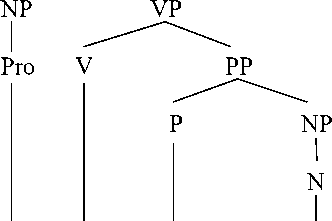
They looked at
her
a. Form
ADVP
curiously
An adverb of manner curiously in datum 5 fills the position of adverb of manner in the final position. An adverb of manner curiously comes after a verb looked that was used to emphasis on how they looked. Curiously is an adverb of manner that is that was formed by an adjective curious and followed by -ly suffix. In the process of the suffixation, adverb of manner is formed by an adjective: curious + (-ly) suffix becomes curiously. It can be seen from the analysis of the tree diagram in datum 5 that the sentence has three major constituents. The form of adverb in the constituent is curiously. An adverb of manner curiously is an optional because it was not required by the verb of a sentence to form well sentence in the structure. It functions in the nucleus they looked. An adverb of manner curiously is called as VP modifier. The NP they and VP looked are part of the constituent structure above.
-
b. Position
It can be seen that an adverb of manner in datum 5 that filled the position of adverb of manner in the constituent structure above was in the final position. An adverb of manner curiously in the constituent structure above occured after VP looked.
Datum 6
Dorothy walked boldly (126)

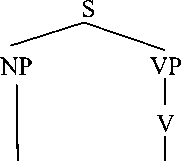
Dorothy walked
ADVP
boldly
-
a. Form
An adverb of manner boldly in datum 6 fills the position of adverb of manner in the final position. An adverb of manner boldly comes after a verb walked that was used to emphasis on how Dorothy walked. Boldly is an adverb of manner that is that was formed by an adjective bold and followed by -ly suffix. In the process of the suffixation, adverb of manner is formed by an adjective: bold + (-ly) suffix becomes boldly. It can be seen from the analysis of the tree diagram in datum 6 that the sentence has three major constituents. The form of adverb in the constituent is boldly. It can be seen that an adverb of manner boldly is an optional because it was not required by the verb of a sentence to form well sentence in the structure. It functions in the nucleus Dorothy walked. An adverb of manner boldly is called as VP modifier. The NP Dorothy and VP walked are part of the constituent structure above.
-
b. Position
An adverb of manner boldly in datum 6 that filled the position of adverb of manner in the constituent structure above was in the final position. An adverb of manner boldly in the constituent structure above occured after VP walked.
Datum 7
Sorrowfully Dorothy left the Throne Room (129)
S
ADVP
S
ADV
NP
VP
Pro
V
NP
Sorrowfully Dorothy left the Throne Room
-
a. Form
An adverb of manner sorrowfully in datum 7 filled the position of adverb of manner in the initial position. It can be seen that an adverb of manner sorrowfully was placed before a verb left that was used to emphasis on how Dorothy left the throne room. Sorrowfully is an adverb of manner that is that was formed by an adjective sorrowful and followed by -ly suffix. In the process of the suffixation, adverb of manner was formed by an adjective: sorrowful + (-ly) suffix becomes sorrowfully. It can be seen from the analysis of the tree diagram in datum 7 that the sentence has three major constituents. The form of adverb in the constituent is sorrowfully. An adverb of manner sorrowfully is an optional because it was not required by the verb of a sentence to form well sentence in the structure. It functions in the nucleus Dorothy left the throne room. An adverb of manner sorrowfully is called as VP modifier. The NP dorothy and VP left are part of the constituent structure above.
-
b. Position
It can be seen that an adverb of manner in datum 7 filled the position of adverb of manner in the constituent structure above was in the final position. An adverb of manner sorrowfully in the constituent structure above occured before VP left.
Datum 8
He answered her bravely. (130)
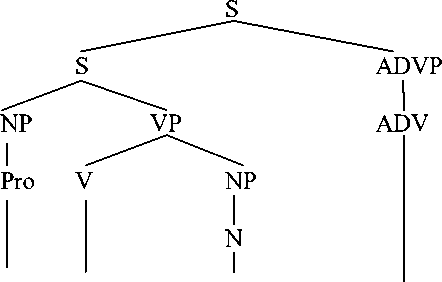
She answered her
a. Form
bravely
It can be seen that an adverb of manner bravely in datum 8 fills the position of adverb of manner in the final position. An adverb of manner bravely comes after a noun her that was used to emphasis on how she answered her. Bravely is an adverb of manner that was formed by an adjective brave and followed by -ly suffix. In the process of the suffixation, adverb of manner is formed by an adjective: brave + (-ly) suffix becomes bravely. It can be seen from the analysis of the tree diagram in datum 8 that the sentence has three major constituents. The form of adverb in the constituent is bravely. It can be seen that an adverb of manner bravely is an optional because it was not required by the verb of a sentence to form well sentence in the structure. It functions in the nucleus She answered her. An adverb of manner bravely is called as VP modifier. The NP She and VP answered are part of the constituent structure above.
-
b. Position
An adverb of manner bravely in datum 8 that filled the position of adverb of manner in the constituent structure above was in the final position. An adverb of manner bravely in the constituent structure above occured after VP answered.
Datum 9
The Winkies lifted him tenderly (160)

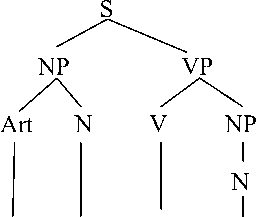
ADVP
ADV
The Winkies lifted him
tenderly
-
a. Form
An adverb of manner tenderly in datum 9 fills the position of adverb of manner in the final position. An adverb of manner tenderly comes after a verb lifted that was used to emphasis on how The Winkies lifted him. Tenderly is an adverb of manner that is that was formed by an adjective tender and followed by -ly suffix. In the process of the suffixation, adverb of manner is formed by an adjective: tender+ (-ly) suffix becomes tenderly. It can be seen from the analysis of the tree diagram in datum 9 that the sentence has three major constituents. The form of adverb in the constituent is tenderly. It can be seen that an adverb of manner tenderly is an optional because it was not required by the verb of a sentence to form well sentence in the structure. It functions in the nucleus The Winkies lifted him. An adverb of manner tenderly is called as VP modifier. The NP The Winkies and VP lifted are part of the constituent structure above.
-
b. Position
An adverb of manner tenderly in datum 9 that filled the position of adverb of manner in the constituent structure above was in the final position. An adverb of manner tenderly in the constituent structure above occured after VP lifted.
This research study analyzed the form of adverb of manner and its positions of adverb of manner found in the data source. The researcher of this study found that there was one form of adverb of manner found in the data source. Adverb of manner found in the data source was an adjective followed by ly- suffix. There was one adverb of manner that was positioned in the
initial and eight adverbs of manner were found in final position. They were adverb of manner that could be filled in the sentence structure in the form of adverb of manner. It can be seen from an adverb of manner tenderly in datum 9 which filled the position of adverb of manner in the final position. An adverb of manner tenderly was placed after a verb lifted used to emphasis on how The Winkies lifted him. Tenderly is called as an adverb of manner formed by an adjective tender and followed by -ly suffix. In the process of the suffixation, adverb of manner was formed by an adjective: tender+ (-ly) suffix becomes tenderly. It can be seen from the analysis of the tree diagram in datum 9 that the sentence has three major constituents. The form of adverb in the constituent is tenderly. It can be seen that an adverb of manner tenderly is an optional because it was not required by the verb of a sentence to form well sentence in the structure. It functions in the nucleus The Winkies lifted him. An adverb of manner tenderly is called as VP modifier. The NP The Winkies and VP lifted are part of the constituent structure above.
References
Bowler, J., Lilley, T. J., Pittam, J. D., & Wakeling, A. E. (1989). Novel steroidal pure
antiestrogens. Steroids, 54(1), 71-99. https://doi.org/10.1016/0039-128X(89)90076-7
Broccias, C. (2011). Motivating the flexibility of oriented–ly adverbs. Motivation in Grammar and the Lexicon, 71-88.
Brown, K., Miller, J., & Miller, J. E. (1991). Syntax: a linguistic introduction to sentence structure. Psychology Press.
Catford, J. C. (1965). A linguistic theory of translation: An essay in applied linguistics. Oxford University Press.
Doetjes, J. (2007). Adverbs and quantification: Degrees versus frequency. Lingua, 117(4), 685720. https://doi.org/10.1016/j.lingua.2006.04.003
Ernst, T. (2007). On the role of semantics in a theory of adverb syntax. Lingua, 117(6), 1008
1033. https://doi.org/10.1016/j.lingua.2005.03.015
Guo, Z. Y., Li, D. Y., & Wang, B. X. (1998). A novel concept for convective heat transfer enhancement. International Journal of Heat and Mass Transfer, 41(14), 2221-2225. https://doi.org/10.1016/S0017-9310(97)00272-X
Haeberli, E., & Ingham, R. (2007). The position of negation and adverbs in Early Middle English. Lingua, 117(1), 1-25. https://doi.org/10.1016/j.lingua.2005.08.001
Halliday, M. A. K. (1985). An Introduction to Functional Grammar, Edward Arnold, London. Google Scholar.
Huddleston, R., & Pullum, G. K. (2005). A student's introduction to English grammar. Cambridge University Press.
Ji, S. (2000). ‘Face’and polite verbal behaviors in Chinese culture. Journal of pragmatics, 32(7), 1059-1062. https://doi.org/10.1016/S0378-
Biography of Author

I Gede Nika Wirawan is an English Lecture at ITB Stikom- Bali. He completed his Master study program in Applied Linguistics – Translation Studies from Udayana University in 2014. He completed her Undergraduate study program in English Literature from English Department, Udaya University in 2010. His research interests in Linguistics include translation studies, semiotics and cultural studies. He is also a member of Indonesian Translation Association (HPI)
Discussion and feedback